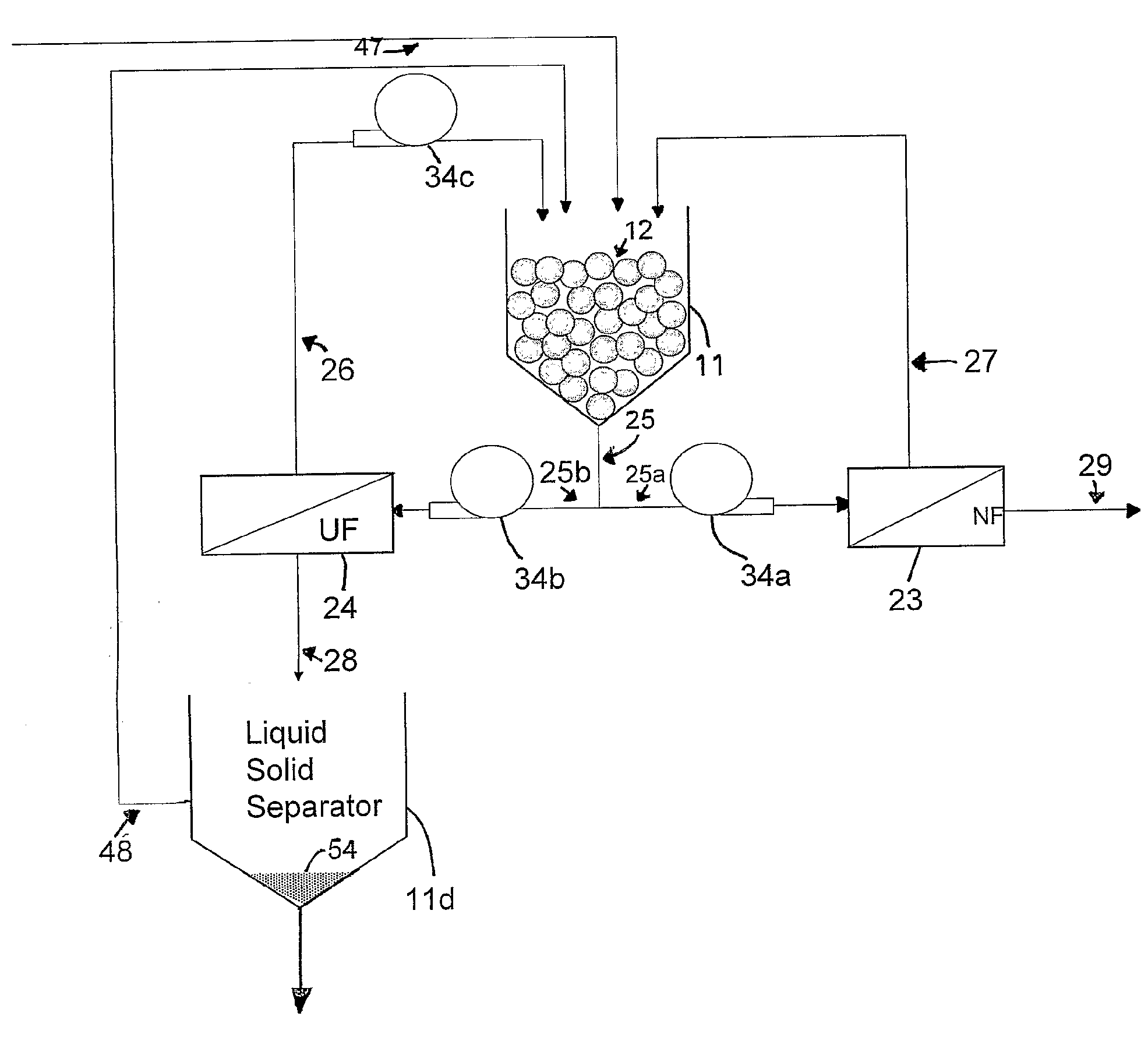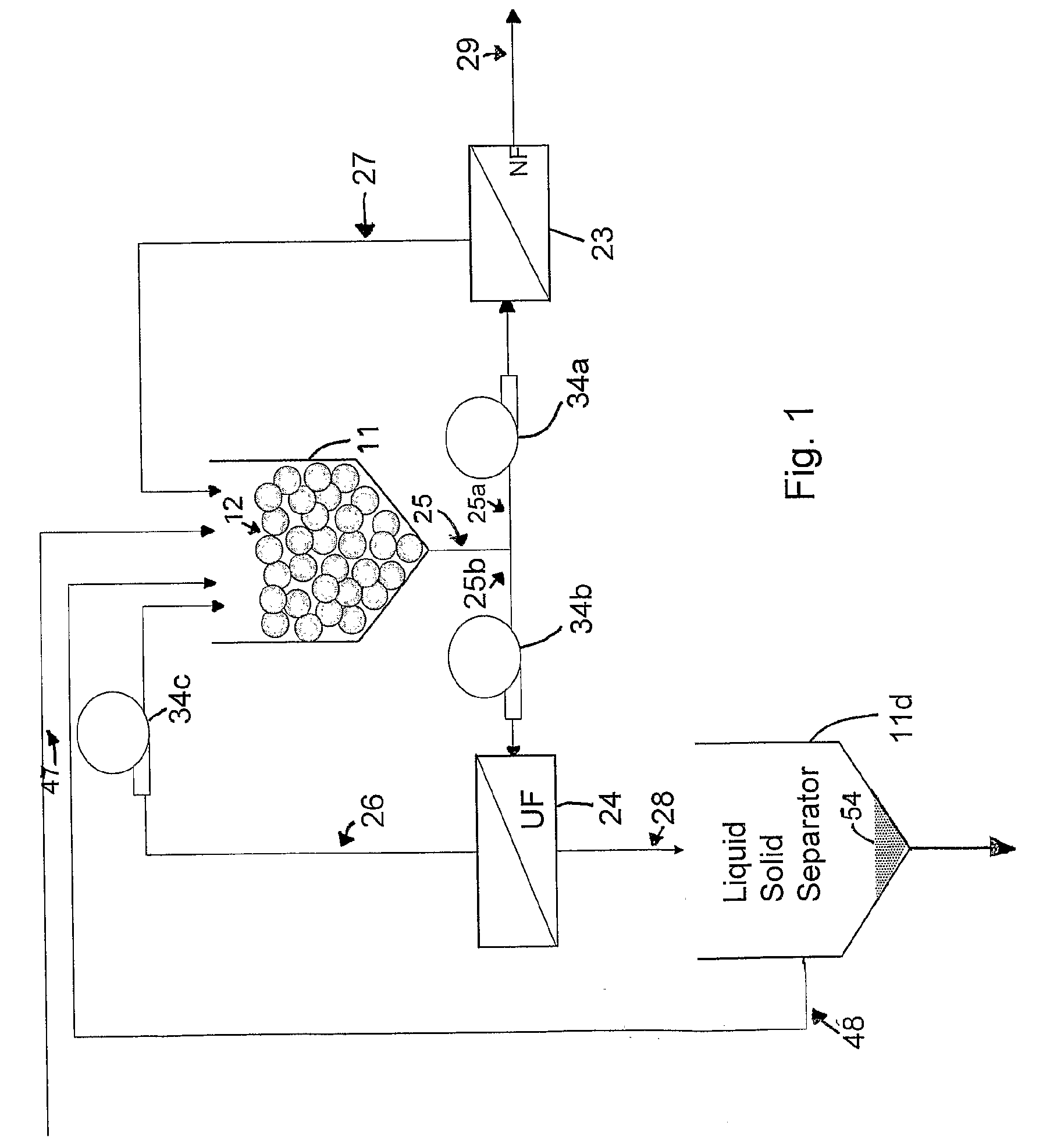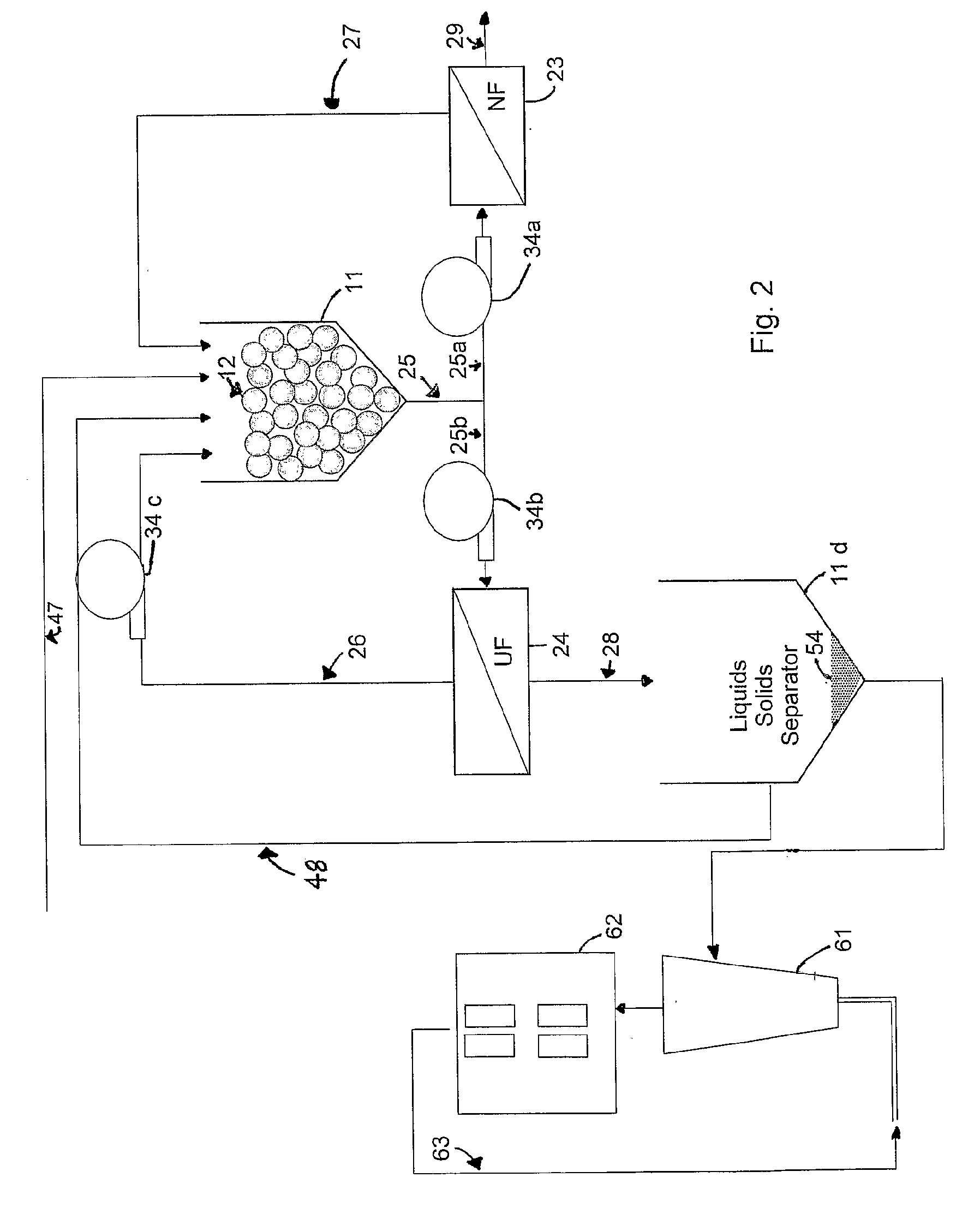Hybrid membrane module, system and process for treatment of industrial wastewater
a technology of industrial wastewater and hybrid membranes, applied in the direction of water/sludge/sewage treatment, solid sorbent liquid separation, water/sludge/sewage treatment, etc., can solve the problems of hazardous compounds, shorten the life time of membranes and equipment, adversely affecting any wastewater treatment equipment, etc., to prolong the life of nanofiltration devices, reduce the content and volume of organic matter, and continuously remove precipitated matter
- Summary
- Abstract
- Description
- Claims
- Application Information
AI Technical Summary
Benefits of technology
Problems solved by technology
Method used
Image
Examples
examples
[0114]The advantages of the present invention, will be illustrated in the following non-limiting examples.
[0115]Adsorption efficiency of activated carbon with and without NF is demonstrated in Examples I and II.
example i
[0116]Adsorption of methylene blue dye (MB) with activated carbon was determined by preparing a set of 1 liter solutions of methylene blue in distilled water, varying the concentration of methylene blue from 100 ppm to 1000 ppm. The solutions were stirred over night, then 50 ml samples were removed from each vessel, the remaining concentration of methylene blue was measured by means of spectrophotometer and the amount of adsorbed methylene blue per each gram of carbon was calculated. The results are given in Table 1 below. It is clear from this example that the efficiency of adsorption of organic molecules sharply decreases when the concentration of the organic solute in the solution decreases.
TABLE 1Efficiency of adsorption of methylene blue (MB) byactive carbon vs. MBconcentration in the equilibrating solutionconcentration of Methylene Blue in:aqueous solutionactivated carbonNo.mMoles / lppm% w / wmMoles / grgr / gr% w / w10.20 750.008%0.20.07 7%20.25 940.009%0.50.1919%30.301120.011%0.70.26...
example ii
[0117]The following experiment was done in a lab scale test cell, made of a stainless steel pressure vessel that is composed of two main parts: (a) a bottom flanged section having sintered SS support with the nanofiltration membrane mounted on top of the sinter, and (b) the upper part, which is a flanged SS cylinder, equipped with a magnetic stirrer and with an upper-flanged cover.
[0118]The cell was filled with a test solution containing 150 ml of 75 ppm methylene blue solution; the original amount of MB in the cell was 11.3 mg. To the MB test solution we added 11 milligrams of AC in powdered form. The flanges of the test cell were tightly assembled; the magnetic stirrer started and pressure was supplied from a compressed nitrogen balloon through a pressure regulator. The pressure rating was 40 bars.
[0119]Upon the application of pressure, the forced test liquid permeated across the membrane. The nanofiltration membrane that was installed in the cell was of a type Nano Pro-BPT-NF-4, ...
PUM
| Property | Measurement | Unit |
|---|---|---|
| concentration | aaaaa | aaaaa |
| concentration | aaaaa | aaaaa |
| concentration | aaaaa | aaaaa |
Abstract
Description
Claims
Application Information
 Login to View More
Login to View More - R&D
- Intellectual Property
- Life Sciences
- Materials
- Tech Scout
- Unparalleled Data Quality
- Higher Quality Content
- 60% Fewer Hallucinations
Browse by: Latest US Patents, China's latest patents, Technical Efficacy Thesaurus, Application Domain, Technology Topic, Popular Technical Reports.
© 2025 PatSnap. All rights reserved.Legal|Privacy policy|Modern Slavery Act Transparency Statement|Sitemap|About US| Contact US: help@patsnap.com



